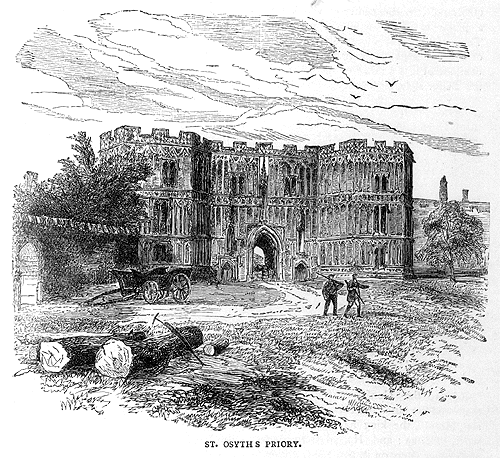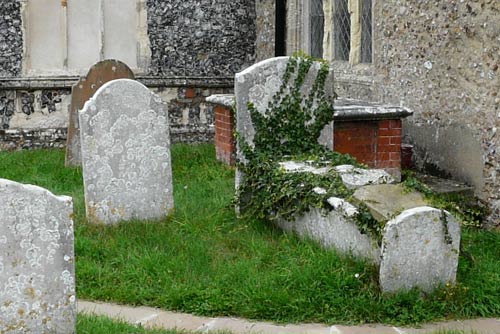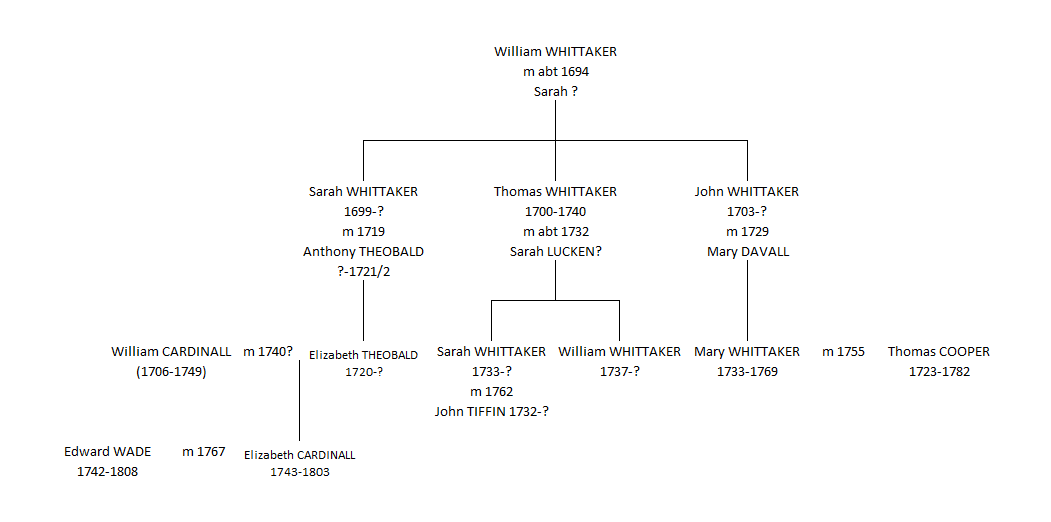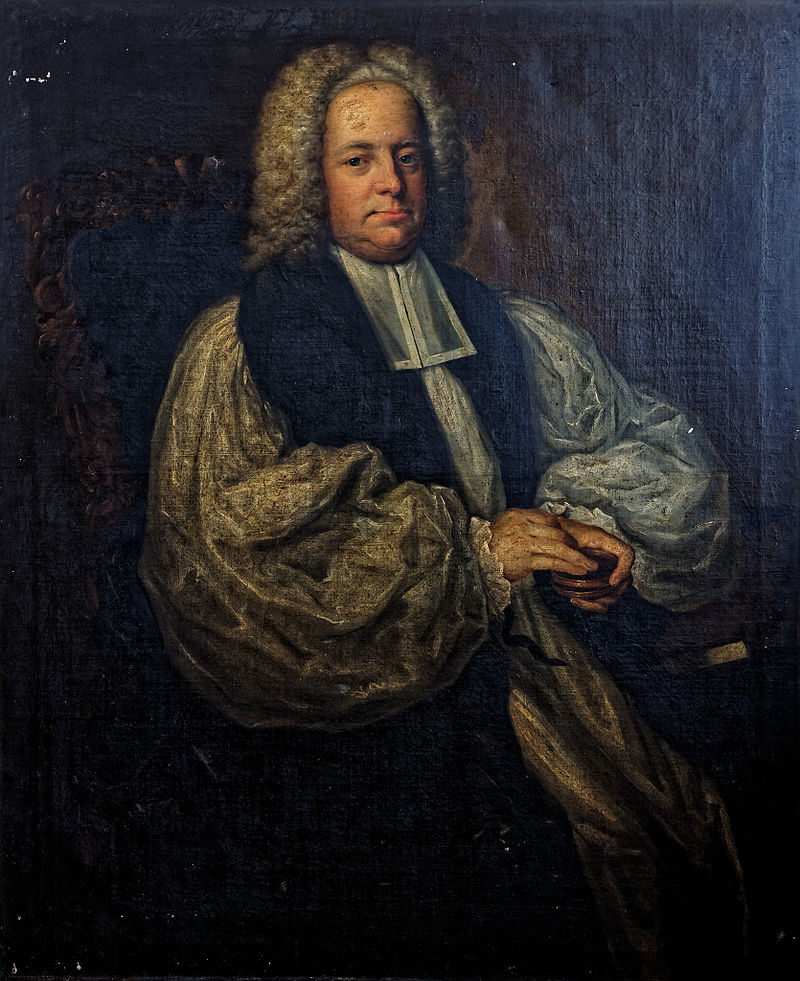
For about three years now, I’ve been trying to find an explanation for the Wade family’s fondness for “Whittaker” as a middle name. I assumed there must be an ancestor somewhere by that name, but I could not find a marriage for William Cardinall to his wife Elizabeth – which must have occurred in the late 1730s or early 1740s. So I was none the wiser. I assumed that Elizabeth’s maiden name was Whittaker, but usually when “Whittaker” was used as a middle name, the girls were called “Sarah Whittaker” plus their father’s surname. (I shall alter my spelling willy-nilly between Whitaker and Whittaker, just like the source documents do….).
What connection was there between Edward Wade and his wife Elizabeth (née Cardinall) and Thomas and Mary Cooper? They are buried very near each other in Fingringhoe, and the Cooper’s second son was John Whittaker Cooper – Whittaker was Mary’s maiden name, so was she connected to the Wades? When Edward and Elizabeth married in Layer-de-la-Haye in 1767, one of their witnesses was Charles Tiffin. Was he connected to John Tiffin of Layer-de-la-Haye, who’d married Sarah Whittaker in Fingringhoe in 1762? Were Mary Whittaker and Sarah Whittaker sisters? Was John Tiffin’s wife the inspiration for the name “Sarah Whittaker” chosen by the Wades?
After transcribing Ramsey’s parish registers, and rummaging through some wills, I had a mini breakthrough. I was able to find out that Mary, wife of Thomas Cooper, was originally a Whittaker, and that her mother’s maiden name was Davall – that name also turns up as a middle name in the Cooper family.

The grave near the front of the picture, covered in ivy, contains the remains of Edward Wade and his wife Elizabeth. The brick tomb behind is where Thomas and Mary Cooper are buried.
The Theobald family
But the biggest breakthrough came when I started to look through wills of the Theobald family. I was actually doing something else entirely – researching the family history of Hannah Southgate who I wrote about in Poison Panic. In the course of researching her mother’s Blowers ancestors, I happened across the Theobald wills from St Osyth and Great Clacton, and was amazed at what I found.
There, in the will of Anthony Theobald of St Osyth, written in 1743, was mention of his granddaughter – Elizabeth Carnel wife of William Carnel. As you may have noticed, “Cardinall” presents problems for people, who sometimes spell it “Cardnell” and sometimes drop the “d” out entirely and just go with “Carnel” – this is what I assumed had happened in Anthony’s will. This couple, it seemed to me, were William and Elizabeth Cardinall who lived in Alresford in the 1740s. So I decided to follow this thread further.
The will of Anthony Theobald jnr of Great Clacton was written in 1721, and proved the following year. In it, he mentions his wife Sarah and his daughter Elizabeth – who were left everything he owned – and his father Anthony Theobald, his executor. Clearly then, Anthony jnr died in 1721 or 1722, over twenty years before his father. I could find only one baptism in Great Clacton for a child of Anthony – this, unhelpfully, was just “A child of Anthony Theobald”, on 7th August 1720. I then looked for marriages.
I couldn’t believe it when I saw it. But there it is… in June 1719, Anthony Theobald married Sarah Whitaker in Great Clacton. They had only had time for the birth of that one child, and then Anthony had died. On 18 February 1725/6, the widowed Sarah Theobald married for a second time – William Cary, aged 24 from St Osyth. They married at the church of St Mary’s-at-the-Walls in Colchester and someone called Thomas Whitaker of St Osyth was the bondsman on their marriage licence allegation. It’s a shame William and Elizabeth’s marriage hasn’t come to light yet (if they married in Alresford, then it will be irretrievably lost as the register covering the right period is missing), but thank goodness for Anthony Theobald senior’s will.
But who was Sarah Whitaker? Where had she come from? Could I link her to Mary Whittaker, who married Thomas Cooper, and Sarah Whittaker, who had married John Tiffin?
The Whittaker family
Bearing in mind Sarah Whittaker married in 1719, I was looking for a date of birth of about 1700. While there are a couple to choose from in the FreeREG database (and in the transcriptions on this site), I could discount the Sarah Whitaker born in Wivenhoe as it seems she died in childhood. I was interested in the Whittaker family in St Osyth.
William and his wife Sarah founded their brood in 1695, but of the eight children they produced, only three appear to have survived to adulthood – Sarah (born on 5th February 1698/9), Thomas (born on 18th April 1700) and John (born on 23rd Feb 1702/3). If this is the Sarah Whitaker who married Anthony Theobald, she would have been 20 when she walked down the aisle.
Thomas Whitaker
It seems plausible that this is the same Thomas Whitaker (or “Whittakers” as he signs himself) who was the bondsman for Sarah Theobald’s marriage to William Cary in 1725/6 – it’s not unusual to see brothers being the bondsman for their sister.
Thomas himself had a wife called Sarah, and they had four children between 1733 and 1737. Sarah, born about 1733; Thomas a year later, Mary in about 1736 and an unnamed child (possibly William) in 1737. When Thomas senior wrote his will on 15th February 1739/40, he only mentions two children – Sarah and William. His wife Sarah appears in the will too. His executor is his father-in-law Robert Lucken. Whilst that term can refer to a stepfather as well as the father of one’s wife, it’s possible that this is Sarah’s father, which gives us a possible maiden name for her (without yet locating their marriage, this is a handy clue). Thomas also names his brother John Whitaker in the will – he left him £5.
It is possible that Thomas’ widow is the Sarah Whittacre, widow, who married John Dean in Weeley in 1741.
John Whitaker
In 1729, when John was 26, he married a widow, Mary Stephens, in Tendring. Her maiden name had been Davall, and her first marriage had been to Anastasius Stephens in Mistley in 1722; he died in Tendring only a year later.
On the marriage of John and Mary, John’s abode was given as St Osyth, but they had a son, John, baptised in Tendring in 1730. It seems the child died a few months later. The following year, a daughter, Mary was baptised in St Osyth, and then buried in Tendring not long afterwards. In 1733, they had another daughter called Mary, who was baptised in Tendring. The Mary Whittaker who married Thomas Cooper was born in about 1733 – this as an estimate based on the age carved on her tomb when she died in 1769, which said she was 36. In 1735, John and Mary had another daughter baptised in Tendring – this was Susan. Is she the Susanna Whitaker who was buried in Fingringhoe in 1738?
There’s other clues which firm up the theory that the Mary Whittaker baptised in 1733 is the same one who married Thomas Cooper in Ramsey in 1755:
- Thomas and Mary Cooper had a son called John Whittaker Cooper, who would appear to be named after Mary’s father,
- Thomas and Mary’s daughter had a son called Henry John Whittaker Cooper Roger Hayes,
- Thomas and Mary’s son Thomas had (among his 15 children) sons Thomas Davall/Duvall Cooper (the spelling varies) and another John Whittaker Cooper.
What seems possible is that Sarah Whittaker, daughter of Thomas Whittaker, was living in Fingringhoe with relatives when she married John Tiffin in 1762, perhaps where her mother had gone with her new husband, if she had remarried. Sarah moved with John Tiffin to Layer-de-la-Haye, and as this is where Elizabeth Cardinall married Edward Wade in 1767, it seems reasonable to suppose that Elizabeth had moved with Sarah (who was her mother’s cousin). Elizabeth’s father died when she was only about 8 years old, and her mother was 29. Sarah had lost her father when she was 7. Tight family networks were vital for people to survive in the 18th century, hence they would move together.
There’s also something else to ponder…. Mary Davall’s mother, Priscilla, had married a William Whitaker in Ramsey in 1717. As the last child of William and Sarah Whitaker was baptised in 1711, it is at least plausible that Priscilla had married William Whitaker of St Osyth (sadly the marriage only gives their names, without abodes and marital status). This would mean that in marrying John Whitaker, Mary Davall had married her stepbrother, a not-uncommon occurrence.
The grand denouément
So there we are. The explanation for the names “Sarah Whittaker” and “John Whittaker” being repeated by later generations, the reason why the Wades and Coopers are buried so near each other in Fingringhoe, “Davall” popping up as a middle name in the Cooper family…. In order to make this nice and clear, behold, a family tree. I’ve removed some people who aren’t mentioned here, but otherwise….

They were all cousins, all the descendants of William Whittaker and his wife Sarah, in St Osyth. And I only unwound this skein by a chance mention in a will that’s nearly 300 years old. But then, that’s what I like about genealogy. One minute you think you’re wasting your time looking through a random will, and the next, you stumble over a clue that you thought you’d never find.
The not-very-nice grandad
There’s a record from the Court of Chancery between William Whitaker of St Osyth and Anthony ‘Theoball’ senr, from 1727. I wondered if it was to do with Sarah possibly marrying again in 1726, and what that would mean for the property that she and her daughter were left by her first husband. I wondered too if it would tell us if Mary Davall’s mother had married William Whitaker of St Osyth. Or if it could tell us about disputes over the Kenerley’s estate – as you are about to read, Anthony Theobald and Sarah Whittaker were related because Sarah’s aunt was her husband’s stepgran.
What it turned out to be was something rather tragic. Sarah was so young when she was widowed, and her late husband’s father was pursuing her, claiming that she owed money from some cattle that Anthony jnr had driven to market. He sounds incredibly mean, and I wonder if this is why the Wades fondly repeated the names Cardinall and Whittaker through the generations, but never used the names Anthony or Theobald. Elizabeth would have had little memory of her father, and although she was left £10 by her grandfather, he left everything else, including property to a woman called Martha Batterham – he didn’t say how he was related to her, only that she was “now living with me.”
The stepdad
As mentioned, after Anthony Theobald’s death in 1722, Sarah married William Cary of St Osyth in 1725. I haven’t found a burial for Sarah yet and had wondered if she lived for a while afterwards, but it seems that William had remarried by 1733. He had married a woman called Rachel. I can’t find their marriage record or a marriage licence, but she is likely to be Rachel Wrinch from Dedham.[1]When John Wrinch of Dedham died in 1742, he mentions his daughter Rachel, wife of William Cardy. John Wrinch’s daughter Rachel was baptised in Dedham on 6th October 1709. It is likely that … Continue reading They had a daughter Rachel baptised in Great Clacton in 1733 (who died a few days later) and another called Catherine in 1734. Then the family moved to East Donyland where William and Rachel had a daughter called Elizabeth in 1736 (who presumably died a year or two later, although I haven’t found her burial), and twins Elizabeth and Rachel in 1739, who died a few months later.
In May 1754, William Cary, farmer of East Donyland, wrote his will, mentioning only his wife Rachel and his daughter Catherine. He mentioned land that he owned in Cold Norton called Gillims and Collierds, and East Donyland called Whelers, and “all that security of cash and rents purchased from Archdeacon Cary of Port Arlington [Portarlington], Ireland.” Firstly, it’s interesting that one of the witnesses of his will was Mark Grimes, as Catherine married him in August that same year. Secondly, it’s interesting that he mentions Cold Norton, as Catherine and Mark moved there – Mark would die there in 1772, and Catherine probably predeceased him.[2]There’s a gap in the register where Catherine probably died – she isn’t mentioned in his ERO will, only their children are, which strongly suggests that she had predeceased her … Continue reading

Thirdly, Archdeacon Cary of Portarlington is a very interesting clue. He was Henry Cary (1717-1769), the son of Mordecai Cary (1687-1751) and his wife Catherine Courthorpe (1690-1751). Mordecai and Catherine were both Londoners – Mordecai’s father, John, was a cook and citizen of London, which earned Mordecai a place at the Blue Coat School in London. John’s wife was Jane Cheese – quite a good surname if you’re going to marry a cook! Mordecai then went to Trinity College, Cambridge, earning his MA in 1712. Their daughter Anne was baptised at Cold Norton on 27 June 1716, but buried only a few days later on 4 July 1716 – so we see another connection between Cold Norton and people called Cary.
Mordecai’s uncle, William Cary, was a carman who lived in Whitechapel, London. In his will, he mentions several “carroomes”, which he left to his wife Catherine, his sisters Margaret Green and Sarah Smythies, and the children of his brother John. And John’s children were, according to the will, Mordecai, John, Elizabeth, Jane and William.
Could it be that William Cary, who married the widowed Sarah, then Rachel, and died in East Donyland, be Mordecai’s brother? Based on William’s marriage licence, he was 24 in 1726, making him fifteen years younger than Mordecai. With his name being listed at the end, he was presumably the youngest of Mordecai’s siblings, so it certainly seems a possibility. And looking at baptisms for John and Jane Cary’s children,[3]Five of their children were baptised at St Faith’s-under-St-Paul’s – Jane on 6 May 1686, Mordecai on 15 Aug 1687, John on 11 Aug 1689 (died a few days later), another John on 9 Sep … Continue reading there is a baptism at St Ethelburga’s, Bishopsgate, in the City of London, for a son called William on 15 March 1701/2. It seems very likely then that William, the brother of a bishop, and the uncle of an archdeacon, lived in Essex and worked as a farmer.
Updates
Updated 1 Dec 2020 with information about the Whitaker/Theoball chancery case, and William Cary’s second marriage, his will, and his possible family.
Footnotes
| ↑1 | When John Wrinch of Dedham died in 1742, he mentions his daughter Rachel, wife of William Cardy. John Wrinch’s daughter Rachel was baptised in Dedham on 6th October 1709. It is likely that “Cardy” is a spelling error in the will. When Rachel married again, following William’s death, she was living in Dedham, which shows she had a connection with the village. |
|---|---|
| ↑2 | There’s a gap in the register where Catherine probably died – she isn’t mentioned in his ERO will, only their children are, which strongly suggests that she had predeceased her husband. Her mother, Rachel, had remarried in 1756, and her will, written in 1778, makes no mention of Catherine either, just her two grandsons Mark and Cary Grimes. |
| ↑3 | Five of their children were baptised at St Faith’s-under-St-Paul’s – Jane on 6 May 1686, Mordecai on 15 Aug 1687, John on 11 Aug 1689 (died a few days later), another John on 9 Sep 1694, and another Jane on 19 Feb 1692/3. Their two children baptised at St Ethelburga’s were William, and another Jane on 13 March 1697/8. There’s possibly another Jane baptised at St Nicholas, Cole Abbey on 1 Oct 1704. |
